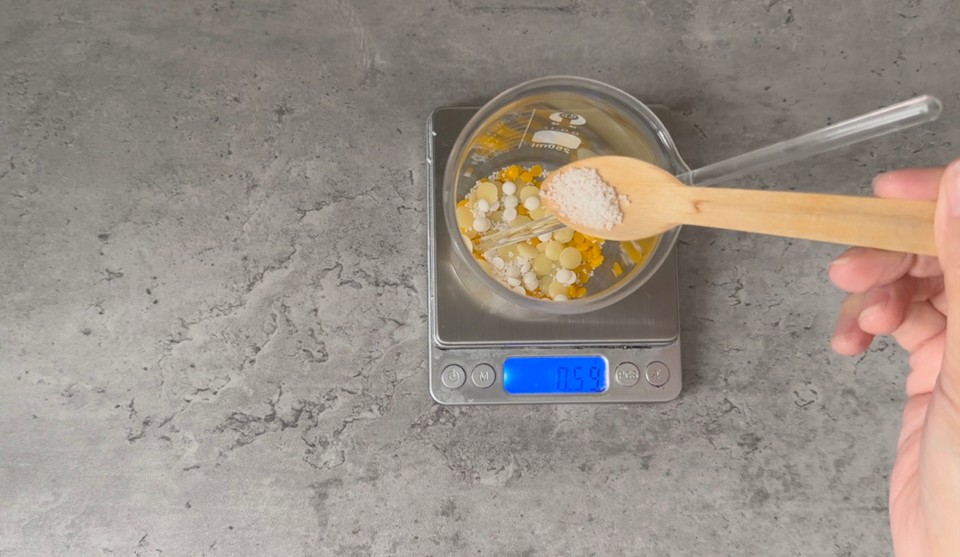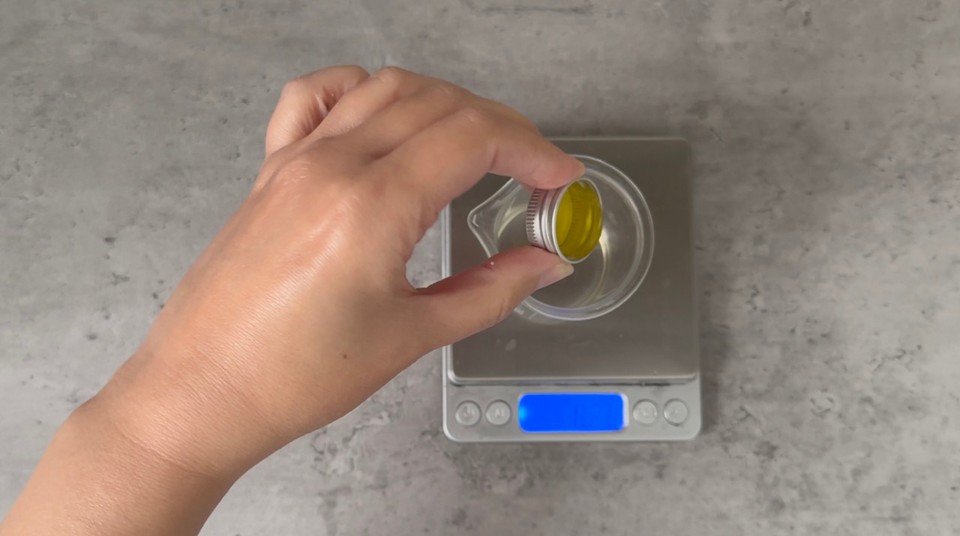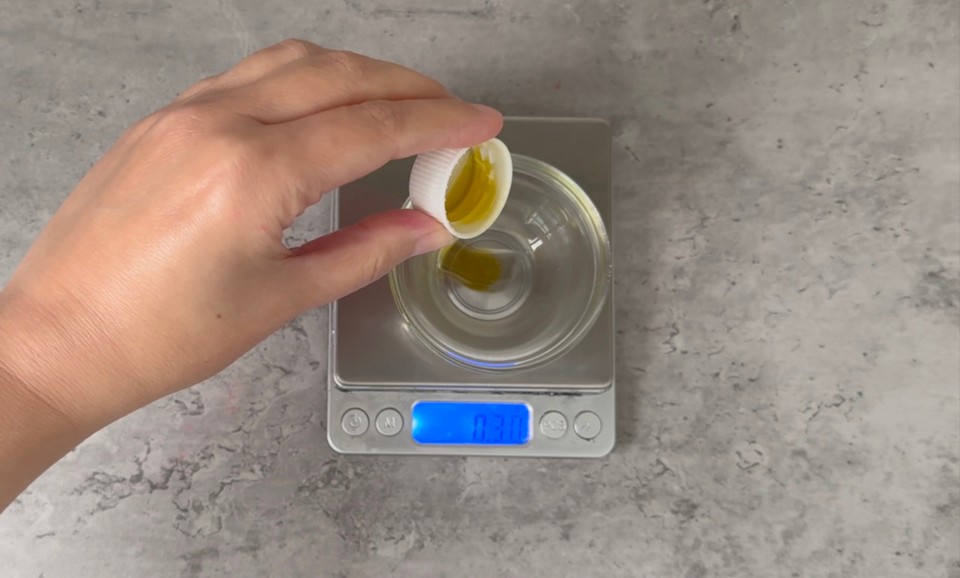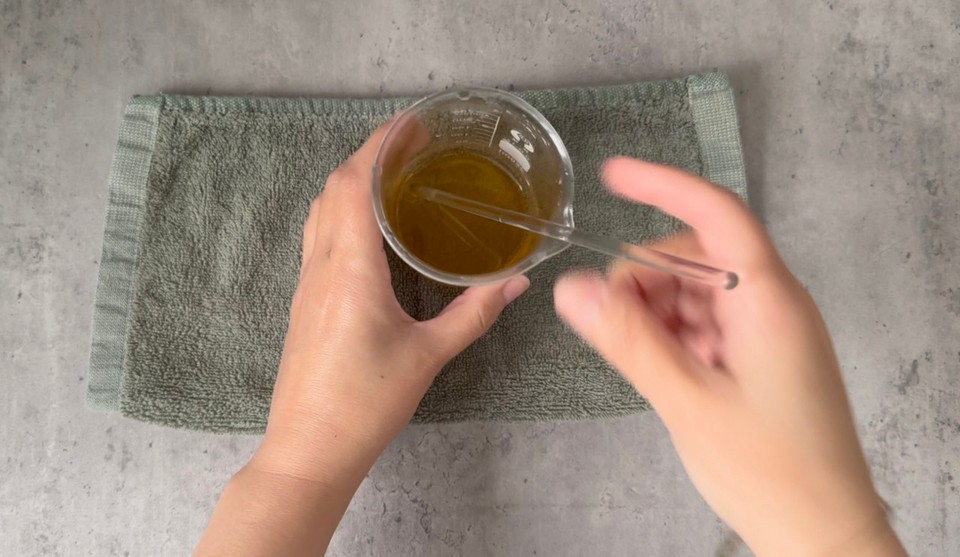Cheeks And Lips Tint
| Phase | Ingredient | Percent (%) | Weight (g) |
|---|---|---|---|
| Phase A | Candelilla wax | 10 | 2.5 |
| Rice bran wax | 10 | 2.5 | |
| Sunflower wax | 4 | 1 | |
| Berry wax | 6 | 1.5 | |
| Castor oil | 4 | 1 | |
| Phase B | Coco caprylate | 44 | 11 |
| Jojoba oil (SIMMONDSIA CHINENSIS SEED OIL) | 6 | 1.5 | |
| Phase C | Silica powder (INCI Silica) | 6 | 1.5 |
| Mica | 6 | 1.5 | |
| Phase D | Calendula extract | 2.8 | 0.7 |
| Fragrance oil | 0.8 | 0.2 | |
| Vitamin E | 0.4 | 0.1 |
This recipe is for a vegan lips and cheeks tint.
You can choose any color for this tint or combine 2-3 colors to achieve your desired color.
In this recipe, I combined several waxes. Try this recipe if you prefer to make a simple version of a cheek and lips tint with fewer ingredients and use only one wax.
After making the cheeks and lips tint, try out this cleansing balm dupe which will be perfect for removing this type of makeup.
Using a combination of waxes with varying viscosities has a lot of benefits to the final product. Each wax has its properties and melting point and has a different texture that helps achieve a silky and creamy consistency in the final product.

I combined candelilla, rice bran, sunflower, and berry wax.
Candelilla wax ( plant-based wax derived from the leaves of the candelilla shrub) adds emollient properties by creating a protective barrier on the skin to help retain moisture and have a high melting point, which helps keep the product solid even in high temperatures.
Candelilla wax also adds shine and a glossy look to the final product.
You can use beeswax instead of candelilla wax. Beeswax has a melting point of 62 to 65°C. In comparison, candelilla wax has a melting point of 68.5°C to 72.5°C so in case you replace the candelilla wax with beeswax, you should use 3g of beeswax and reduce 0.5g from the coco caprylate (total of 10.5g coco caprylate).
If you use beeswax, the final product is no longer vegan.
If you want to use other waxes, check this post about waxes in cosmetics to get more information and ideas about which waxes you can use.

Rice bran wax (derived from rice bran oil) also acts as an emollient. Rice bran wax has a higher melting point than candelilla wax. Rice bran wax is similar to carnauba wax, although carnauba wax has a higher melting point. If you want to swap the rice bran wax with carnauba wax, use 2g of carnauba wax and add 0.5g to the berry wax (a total of 2g of berry wax).
I also add sunflower wax (derived from the waxy coating of sunflower petals and stems) that has emollient and conditioning properties. Sunflower wax creates a smooth and creamy consistency to the final product and helps to improve the spreadability and application of the product onto the skin.
Sunflower wax also adds shine to the final product and acts as a binding agent (helps to hold the ingredients together). Sunflower wax is considered non-comedogenic (it does not clog the pores), which is ideal for face products. You can use jojoba wax (INCI: HYDROGENATED JOJOBA OIL) instead of sunflower wax. It will not have the same texture or consistency, but it will be similar.
Lastly, I used berry fruit wax (derived from the waxy coating on certain berries' surfaces). Berry wax has moisturizing properties and helps to achieve a smooth and creamy feel in the final product. You can experiment with other waxes instead of berry wax or even try cetyl alcohol.
In phase A, I added a small amount of castor oil. Castor oil provides moisturizing and conditioning properties. It can help hydrate the skin and give the final product a smooth and silky texture. You can use jojoba oil if you wish to replace it.
Phase B is a combination of coco caprylate and jojoba oil. I chose coco caprylate (derived from coconut oil) since it is an excellent emollient usually used as an alternative to silicone. It is not greasy or heavy on the skin, which makes it perfect for face products.
I also use coco caprylate in the cleansing balm dupe for its non-greasy properties.
You can replace the coco caprylate with Isoamyl Laurate (an ester derived from isoamyl alcohol and lauric acid). You can also use fractionated coconut oil. Fractionated coconut oil is a type of coconut oil that has undergone a process called fractionation, which removes the long-chain fatty acids, leaving behind the medium-chain triglycerides (MCTs). This process results in a lighter oil.

Jojoba oil (derived from the seeds of the jojoba plant) has moisturizing and emollient properties and is considered non-comedogenic. Jojoba oil also has antioxidant and anti-inflammatory properties and adds a silky skin feel.
You can replace the jojoba oil with Squalane (a lightweight and non-greasy emollient derived from plants like olives).
Since phase A contains many waxes that need to be heated at high temperatures, I prefer to add phase B after I take off the heat phase A. Once adding phase B the mixture will start to solidify because of the different temperatures between phase A and phase B. Keep mixing it until you'll get a liquid consistency. If you need, you can place phases A and B into a double boiler on low-medium heat for 1-2 minutes till the mixture is liquid again.
In general, coco caprylate and jojoba oil can tolerate high temperatures, but I prefer not to expose them to high temperatures for a long time.
In phase C, I combine mica powder and silica powder.
Mica powder is a naturally occurring mineral used in the cosmetic industry for its shimmering and light-reflecting properties.
I blended two colors of mica. I used gold-red and azalea. You can combine any mica color you like to achieve your preferred tone of color.
When I make makeup products, I usually add silica powder. Silica powder (silica microspheres or beads) is a finely milled silica. It is derived from silicon dioxide (SiO2). Silica can help to blur the appearance of fine lines, wrinkles, and imperfections on the skin. It scatters and reflects light, creating a soft-focus effect and providing a smoother and more even complexion in addition to its ability to absorb oil or moisture.
You can replace the silica powder with arrowroot powder, tapioca starch, cornstarch or kaolin clay. Use very fine powders; otherwise, the final product will be grainy. This is especially important with clays. Some clays come in a thick powder and will change the final product's texture.

Phase D contains vitamin E, calendula extract and fragrance. I used oil-based calendula extract, which you can replace with other oil-based extracts or use jojoba oil instead.
You can use any fragrance oil you like (make sure to use skin-safe fragrance oil).
Of course, you can make a fragrance-free product. Add 0.2g to the coco caprylate instead of the fragrance oil if you wish to have a fragrance-free product.
The final product is creamy but not too soft. It is very easy to apply on the skin and will not dry the skin.
Method:
- In a heat-resistance beaker, add phase A ingredients. Start with the hard waxes and then add the rest of the ingredients.





- Place phase A into a double boiler to melt.

- In a different beaker, add the ingredients from phase B. Set aside.


- In a different container, add phase C ingredients. Set aside.




- prepare phase D ingredients in a separate container and set aside.



- Remove phase A from the heat when everything is melted.

- Add phase B to phase A and mix. If your mixture is solid, mix for 1-2 minutes. If needed, put phases A and B back into a double boiler for 1-2 minutes to melt.



- Add phase C and mix well.


9.Add phase D and mix well.


- Pour the mixture into containers and let it cool down to room temperature. You can place the containers in the fridge for 1-2 hours.









